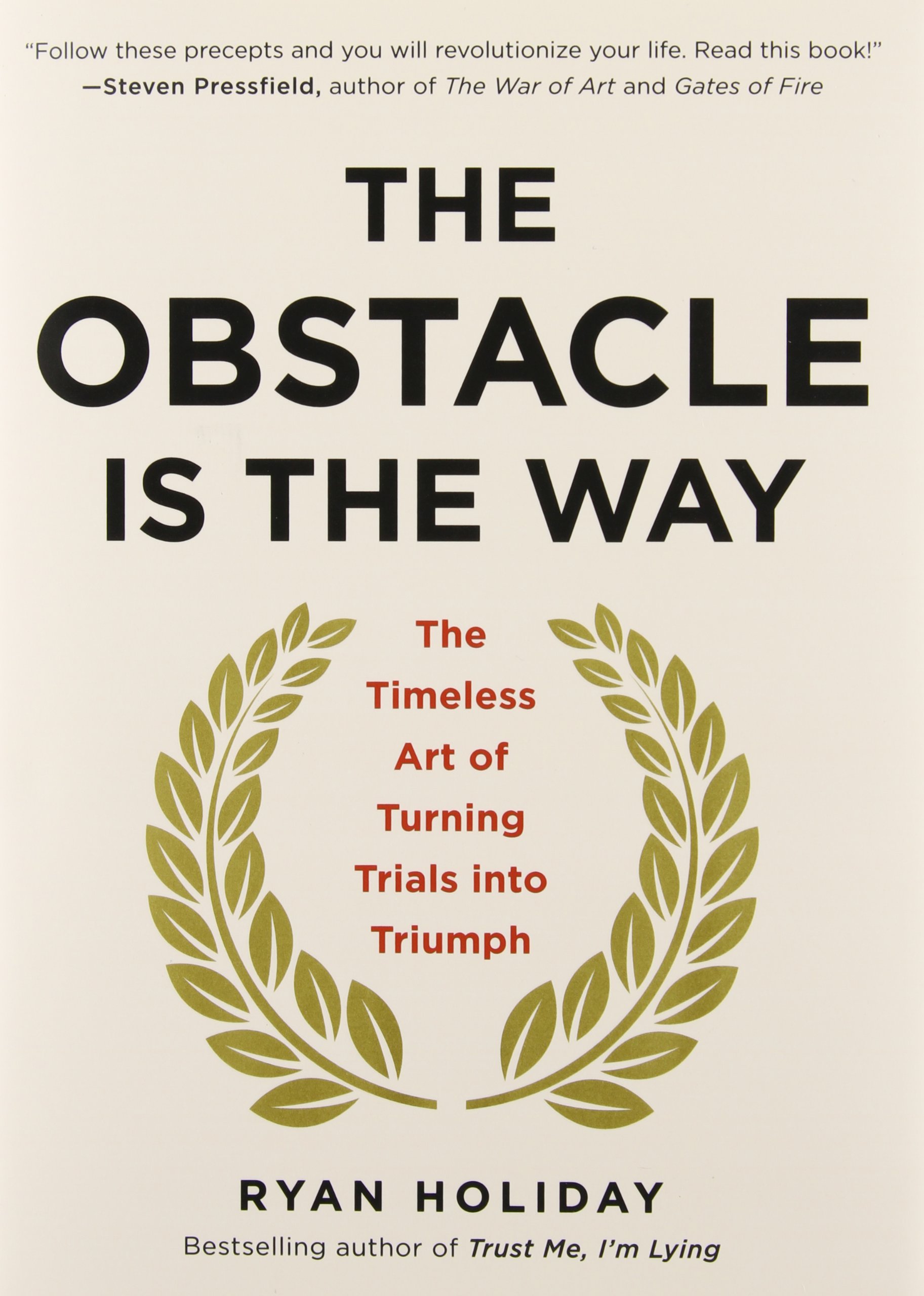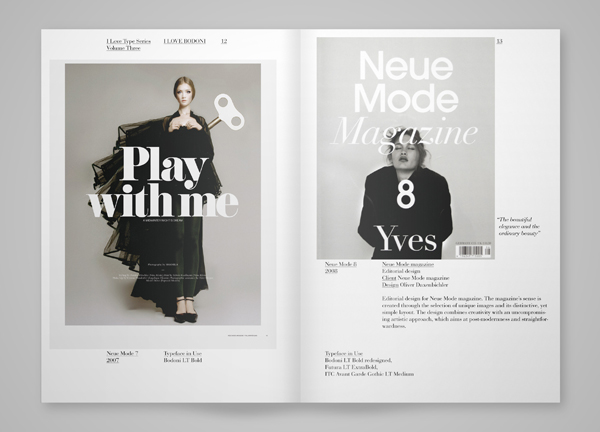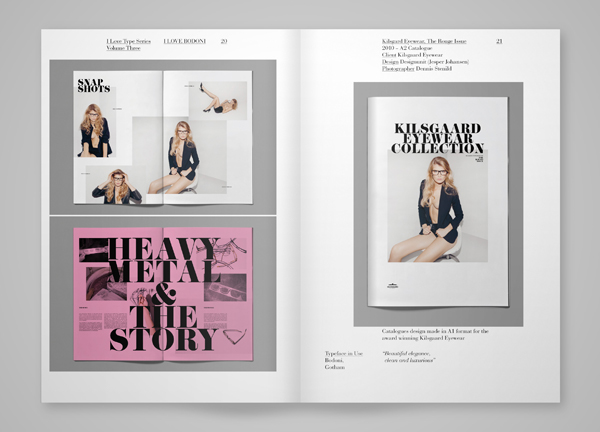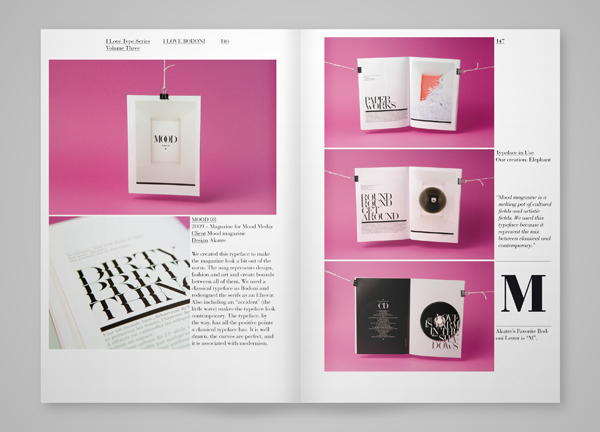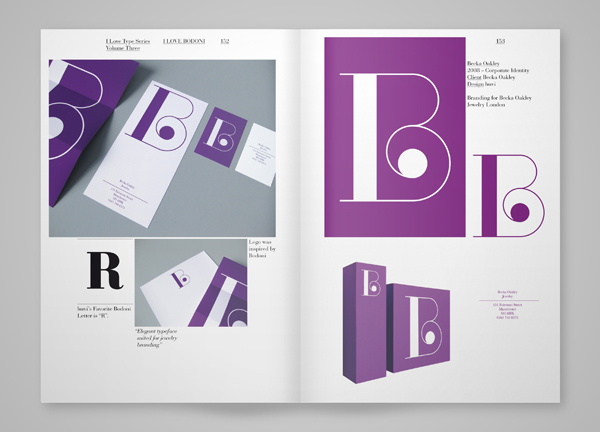October 10, 2016
BramTalks on How to Create New Digital Art
BramTalks on How to Create New Digital Art
We’ve been fans of the work of designer & maker Bram Vanhaeren for quite a while. Based in Antwerp, Belgium, he has been creating and making many works with that distinct style of his with a vibrant colorful palette coming together with unique vector shapes.
About 4 months ago, Bram made his debut with a YouTube Channel where you can find interesting videos on different insights on the industry and some of this life experiences. It’s quite lovely to follow along, definitely give it a watch. For today’s feature, Bram is sharing his process on making new digital art, hope you will enjoy!
Wonder how I create a new portrait? How I exactly work? Today I’m really excited to share precisely how I create new work and show you my process. Starting with an idea, a hyper time-lapse shot – to give you a glimpse on all the magic that happens in Illustrator & some insights how I pick my photographic material.
Watch the Video
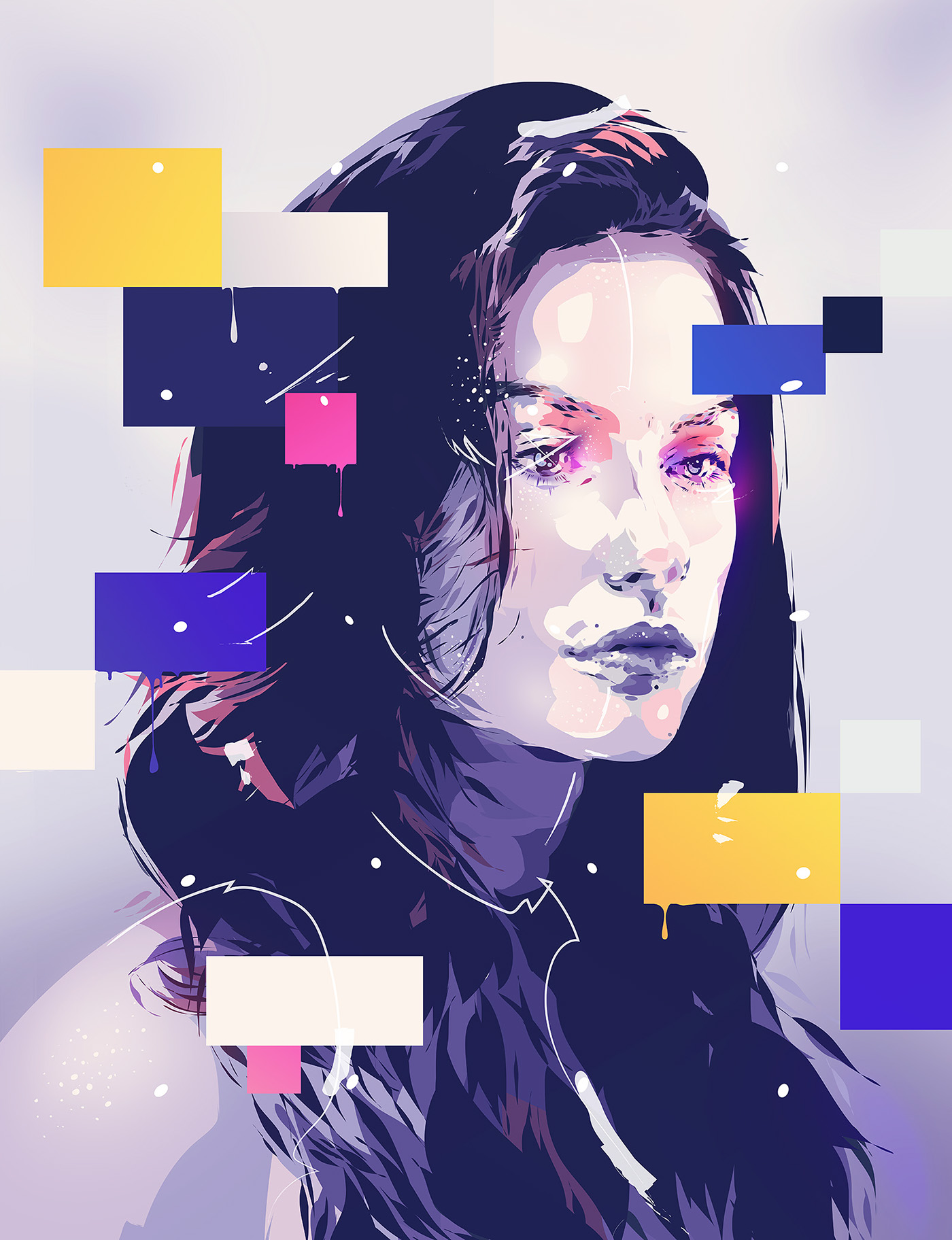

More information: http://www.bramvanhaeren.com.
AoiroStudio
Oct 10, 2016
Source: Abduzeedo Tutorials
August 30, 2016
Interview with Comic Book Legend Richard Corben
Interview with Comic Book Legend Richard Corben
In all these 5 years doing interviews here for Abduzeedo, I always felt blessed for having the opportunity to contact and to know more about such great established artists and also some young artists full of talent. And today it’s a great day, we had the amazing opportunity to interview one of the living legends of comic books, Richard Corben. I hope you guys appreciate the wise words and stories of this pencil magician.
You can reach Richard on the following links:
1) It’s really a pleasure to interview such a legend of comics. Since you’re pretty much a overachiever, we really would like to know how it all started, tell us more how your journey as a comic book artist started?
I’ve always been interested in comics, not only as a pleasant pastime, but as a medium that I could use for my own visual stories. The earliest comic books I remember were Superman and some westerns. All during this early period, I drew my own comics such as TRAIL, THE DOG.
As a boy, I started collecting the EC Horror and Science Fiction titles. When they were hounded into oblivion I moved on to Tarzan during the Jesse Marsh years. Then I went to Art college and I put away my comic interests to study “serious” art. My earlier goals transformed from a career in comics to one in illustration and filmmaking. When Creepy (the horror comic) appeared everything changed again.
It was about that time that a new phenomenon emerged, the underground comix. This had an incredible effect on me. Suddenly life was filled with amazing possibilities. The editors at Creepy finally started sending me scripts, after much courting I might add. So doing underground comix and drawing for Warren’s horror books allowed me to resign from my regular day job and became a professional comic book artist.
2) Although you already have a really district style and imagery, please tell us who were the masters you got inspiration for your art?
Of course comic strip and comic book artists were my first inspirations. They would include V. T. Hamlin (Alley Oop), Wally Wood, Alex Toth, and Graham Ingles of the E.C. books. During my “serious” phase I was most inspired by the Post-Renaissance artists, Durer, Michelangelo, Carravagio and Vermeer. Art Gods, one and all!
3) Having worked with comics, movies, animation and art, could you tell us what was the work you’re more proud of?
All those disciplines are demanding, but I feel I’ve been more successful at doing comics. My favorites would include Bloodstar, Den, and more recently, Spirits of the Dead, a collection of my adaptations of several Edgar Allan Poe stories and poems.
4) Describe us a bit about your creative process while creating a piece.
I’m doing more writing these days, including my current project. Roughly, I start with a short story concept; the ideas can come from anywhere. Sometimes it might be based on a character I’d like to develop. From that concept, I sketch ideas. Then scenes must be developed and edited to fit into the number of pages, usually 8.
From there some thumbnail panel breakdowns are done including some necessary dialogue and narration. Next, research is done and reference material gathered for more sketches. Finally, the artwork itself is started. When completed, the pages are scanned into the computer and additional tones or color are applied. Then the final text is written and set to the art with balloons. The last thing is to upload the files to the publisher’s storage web page.
5) How do you describe your daily routine?
Being semi-retired and not desperate to maintain a strict daily output, I’m more casual about scheduling than in former times. I work a couple of hours before lunch and about 3 to 5 hours after lunch. Regular exercise, dinner, then relax with TV or work on hobbies in the evening.
6) You’re still active on the comics business, having done some recent work for publishers as Dark Horse. Tell us what projects can we expect from you in the near future?
Nothing has come out by me in over a year, but I’m hard at work on an anthology series, which I’m not supposed to specify. I can say there will be 8 issues of black and white tonal comics. At this point I’m over halfway through issue 5.
7) Being a comic art veteran, you already saw a lot of trends come and go. Could you tell us what you think about the future of comics?
Predicting future comic trends is like trying to predict the weather; I really don’t worry about it. I just draw my comics the best I can and hope they will find an appreciative audience.
8) Being a multimedia artist, please tell us what’s your favorite media to work with? Why?
An ideal medium for me would be one that is fast, direct, and able to render all the qualities I wish to include. For most comic artists it’s the simple technique of pen or brush and ink. I’m known for adding tonal modeling to my comic art. I do this normally with Prismacolor gray pencils on slightly soft paper that will allow some smear blending. Of course I’ve tried many techniques including computer tools, but I keep going back to the pencils.
9) Finally, what advice would you give to the youngsters trying to break into the comics business?
To make a career doing comic art, drawing pretty much has to be easy for you. It can be challenging, but always meet the challenge. Skill with heads and faces is of upmost importance, followed by hands, figures, linear perspective, architectural and mechanical effects. And, of course, a sense of dramatic storytelling is vital. I’ve always drawn from life, photos, and imagination. Attending life drawing sessions for both training and relaxation is regularly part of my schedule. Such a career can be full of pitfalls. It helps to be stubborn.
marcos333
Aug 30, 2016
Source: Abduzeedo Interviews
August 15, 2016
The Obstacle is the Way – Book Suggestion
The Obstacle is the Way – Book Suggestion
These past few months I’ve read quite a few books of varying topics, from simple fiction to alchemy. Among these books I’ve read two from Ryan Holiday, his latest I believe, Ego is the Enemy and the most popular The Obstacle is the Way. Both books are quite good but I’ll focus this book suggestion post solely on The Obstacle is the Way. I recommend this not only because of the difficult time I have been going through personally but because it has really good insights on how to deal with situations in life.
The Obstacle is the Way is a great portrayal of stoicism, the ancient Greek philosophy of enduring pain or adversity with perseverance and resilience. Stoics focus on the things they can control, let go of everything else, and turn every new obstacle into an opportunity to get better, stronger, tougher. As Marcus Aurelius put it nearly 2000 years ago: “The impediment to action advances action. What stands in the way becomes the way.”
The book is rife with amazing quotes and I feel the greatest takeaway is that obstacles are part of our lives, we don’t choose them. Once you think that that’s the only way you stop questioning why that happened to you. I’d say that it’s not that the obstacle is the way, but life is the way. We need to be adaptable. We need to learn to face adversities not as setbacks but learning opportunities.
I know you might say, it is easier said than done. I agree, but I believe we are always ready for what is given to us. The problem is that we neglect that or we try to reason why instead of moving forward, adapting and learning.
“Ryan Holiday, the author, shows us how some of the most successful people in history—from John D. Rockefeller to Amelia Earhart to Ulysses S. Grant to Steve Jobs—have applied stoicism to overcome difficult or even impossible situations. Their embrace of these principles ultimately mattered more than their natural intelligence, talents, or luck.” — amazon.com
“If you’re feeling frustrated, demoralized, or stuck in a rut, this book can help you turn your problems into your biggest advantages. And along the way it will inspire you with dozens of true stories of the greats from every age and era.” — amazon.com
Heres a video from Ryan about stoicism: Stoic optimism: Ryan Holiday at TEDxUChicago 2014
abduzeedo
Aug 15, 2016
Source: Abduzeedo Books
June 13, 2016
Adobe Take 10 Challenge: A Sit-Down with Joshua Davis
Adobe Take 10 Challenge: A Sit-Down with Joshua Davis
The folks over at Adobe have been putting together a pretty interesting challenge entitled: Take 10 Challenge. In this challenge, you have to create an artwork using 10 Adobe Stock images and you can win a lot of great prizes. For the 2nd take, they are going with the word Weightless and all the submissions will be judge by the mighty Joshua Davis. For the occasion, we had the opportunity to share a few questions with him, hope you’ll enjoy this interview.
Tell us about yourself? What do you do for living?
My Name is Joshua Davis. I’m the Media Arts Director at a studio in New York called Sub Rosa. Since 1995, I’ve been using computers as a medium to create work, lately focusing on the collaboration between hardware and software to create physical interactive experiences.
Tell us about the Adobe “Take 10” Challenge. What was your involvement and how did Adobe approach you to be a judge?
Over my career as a designer, I’ve had a long relationship with Adobe. The software they make helps me deliver the best visual experiences possible. The company reached out to me and threw me an interesting challenge: “you get 10 images from Adobe Stock and get to make whatever you want.” It sounded like a fun project. Given I’ve never worked with Adobe Stock, or with any kind of stock photography, this seemed like the perfect opportunity to do something out of my comfort zone. I agreed to collaborate on 10 Adobe Stock pieces of content and to make something that sings with my style and voice and then to challenge the community to do the same. Then, I become a judge to award winners with some great prizes.


What criteria did you look for while looking at the submissions?
For this Adobe Take 10 Challenge the keyword was “weightless.” The common reaction was to create something that embodied this word. Instead, I chose to use the word as a property in an animation algorithm. What would it look like if I suspended all this Adobe stock in a state of weightlessness and observed and rendered its composition? I wanted the challenge to inspire and push me.
I would hope my finalists embody this same thinking. I want to be inspired by the risks they take. To me, a winning piece of work should always invoke jealousy for not having thought of what they made.
Tell us your process behind reviewing all those submissions?
I want to stop in my tracks and say, “Damn I wish I would have made that.” This doesn’t always mean beauty. To me the most beautiful work might not be the winner. Being unique don’t always mean being pretty and I’m looking for unique.
Aside from this challenge, do you get creative satisfaction on commercial projects? How much time do you give yourself for personal work?
Much of my time in the Sub Rosa lab is split. Half of the time, I’m researching new code, new hardware, or new ways of remixing things to create visual aesthetics. This allows us to spend the other fifty percent of our time applying this research to commercial clients. Our goal in the lab is always to strive to innovate not replicate.






How does social media affect your work these days?
I have a website, but I imagine that no-one ever goes to it. Rather, social is 100% the megaphone by which I broadcast the things I’m working on to the world. Funnily enough, I have pretty strict rules about which content lives where and what purpose it serves.
My hierarchy is as follows:
I have 77k+ followers on Instagram. I use this space to permanently document thinking in flux, projects in motion. The content is usually somewhat final. This Instagram content gets pushed to 27k followers on Twitter and 24k followers on Facebook. If the work is really rocking me, I create larger selections from a series to post exclusively on Ello.
Generative animation is a huge component of what I do, and longer, better quality animation renders go on Vimeo.
After all this is done, and a body of work is complete, it gets packaged up as a final project on Behance.
I use Snapchat to show day-to-day through my eyes. It includes mistakes, crazy ramblings, late night dance parties; stuff that should definitely evaporate after 24 hours, especially when you scream at your followers that you’re a wizard, while fully dressed up as a wizard, etc.
Where do you see your work/style evolving in the next few years?
I’m mostly following the evolution of gaming boxes these days. The evolution of gaming video cards has allowed me to explore using the GPU to render meshes and textures and animate in ways I never thought I would be able to do. Having just demo’d Microsoft’s Halolens in Barcelona, I’m much more excited about Augmented Reality-related experiences than Virtual Reality-related experiences.
On a last note, what is a common mistake that most designers always make these days?
I’d say, having taught in an art university for 10 years, a lot of education systems are about replication, rather than innovation. We teach, “copy Van Gogh” or, “copy Picasso.” This can be fine to a point but what gets lost is finding your voice.
Following your industry on the internet can be a slippery slope. Replicating those you admire only gets you farther away from who you are.
Find you. It’s actually easier than you think, because you are pretty good at being you.
For more information about Joshua Davis: http://www.joshuadavis.com and about the Adobe Take 10 Challenge: http://create.adobe.com/2016/2/17/take_10.html
AoiroStudio
Jun 13, 2016
Source: Abduzeedo Interviews
June 9, 2016
Interview with Paul Kaptein
Interview with Paul Kaptein
I’m always fascinated by technological advances that mix more and more the real world with the virtual world. Whether through the already common resources such as augmented reality or the recent Oculus Rift. Paul Kaptein has a artwork that lives in this intersection, having worked for years in the digital world, his vision of art applies into several concepts that are still abstract in the real world.
You can reach Paul on the following links:
First of all I would like to thank you for doing this interview, it’s an honor for us to present more about you to our readers. I would like to start asking you about when your interest for carving and art started?
Thanks for having me!
I think at some point I really wanted to challenge myself as a sculptor. I’d been working across design and animation and video in my working life and that sort of drove my arts practice for a long time – and it became really comfortable and safe. I was also a bit tired of slick, manufactured works everywhere.
There was an ‘outsourced aesthetic’ proliferating and I was resisting that a bit. I figured carving was sufficiently out of fashion and worthy of pursuing.
2) Which artists do you use as reference?
Ricky Swallow was the first artist I knew of that had used carving in the contemporary art world. He still casts a long shadow in that respect. And he was also the reason not to try carving for many years! Stephen Balkenhol is another whose work is also really great from a carving point of view. Anthony Gormley, Tony Cragg and William Kentridge were the major points of reference when I started out. I didn’t imagine I’d become a figurative artist though.
3)Your style is quite influenced by glitch and surreal art. How did you develop this style and how would you describe it?
Please don’t call it surrealism. It’s more ‘wonky realism’ than surrealism. I’ve never been a fan of surrealism. Ever! Apart from Magritte and small doses of De Chirico perhaps.
Um…I became interested in the glitch aesthetic as consequence of working in video and animation and they sometimes you’d get these little disruptions and distortions and corrupted files that had a certain charm. I’d been looking at the paradoxical nature of time and the ‘now’ and onion skinning and playhead scrubbing were simple ways of disrupting the linear flow of time and I’ve tried to apply these media based conditions to sculpture embedded in the physical world as a way of extending the idea of how something sits in the world and occupies space.
4) Describe us a bit about your creative process while creating a piece
I usually start with some photographs as reference and play around in Photoshop to get the frontal distortions. I don’t have any 3D software skills so I have to work out the missing information as I go. I don’t really have much scope for changing anything once I’ve started though. It might be nice to have someone run some algorithms on a 3D model and see what came of that. If you know anyone?
Apart from some band sawing at the start to get the basic shape, it’s all hand done.
I believe in the deep, dark mystical world of traditional carving though I’d forfeit the right to call it a carving as I finish the work with sandpaper.
5) What would you consider the best moment on your career till now?
Having my work acquired by a few major public collections has been great in terms of validating my practice. Also winning a few art awards has many great side effects, not the least of which being income. Receiving email from around the world with offers of exhibiting is something I never expected and I hope it continues.
6) How do you describe your daily routine?
I usually start with ride to the beach and swim, or surf if there is a wave. Getting to the beach as often as possible is great for clearing the head and sets the tone for the day. I get into the studio by 8.30 – 9 and work until 5 or 6. Time appears to move pretty quickly when I’m working.
7) Being a multimedia artist, please tell us what’s your favorite media to work with? Why?
At the moment it’s wood. It hasn’t refused me! I’ve been wanting to return to sound as well. Maybe this year…
8) Tell us five lessons you believe are really important for every artist.
Work
Play
Take risks
Work harder
Schmooze
9) Tell us websites that you like to visit.
Local surf report. I also check Instagram a few times a day, but I generally try and stay of the net. After emails are dealt with it’s time get going.
10) Thanks again for your time, please leave a final message for the ones who are starting out on this kind of business.
Work hard and lower your expectations.
marcos333
Jun 09, 2016
Source: Abduzeedo Interviews
June 1, 2016
Interview with Javier de Riba
Interview with Javier de Riba
It’s really interesting to see a revival of old techniques into new medias, Javier de Ribas is an artist that brought cement tiles into street art, using them to enhance abandoned ambients adding some color and shapes. We had the opportunity to talk with this rising talent.
You can reach Javier on the following links:
1) First of all I would like to thank you for doing this interview, it’s an honor for us to present more about you to our readers. I would like to start asking you about when your interest for street art and patterns started?
I always enjoy seeing art in the public space, how it relates with the enviroment and how it proposes a dialogue with the viewer.
I studied graphic design and in 2010 with Mará López and Edu Pi started a project called Reskate Boards & Illustrators. It’s about recycling skates. We take old skateboards and reshape them, sand them and give to visual artists to recostumize them. This direct contact with illustrators, painters and visual artist makes me learn a lot and start developing my art.
The interest for the patterns comes from other point. At the end of the 19th century, hydraulic mosaic factories began to appear in the Catalan countries. Many homes in this area feature this type of tile, and I have lived with them all my life.
2) Which artists do you use as reference?
What inspires me a lot is looking how others work. I’m thankfull with internet I can see really good people and meet them. Collaborating with people makes me get a lot of inspiration. I don’t use to give names but Aryz makes me cry :D.
3) Your style is quite influenced by patterns design / retro geometric art. How did you develop this style and how would you describe it?
I love patterns! They add personality and fill the space with a unique rhythm. I’ve work with geometrical patterns because it was the first kind of designs that appeared. Are synthetic way to represent flowers. Each tile is identical, but the repetition generates new forms, born out of how each of the tiles join and intersect. Like in abandoned tiled floors, flowers usually appear between the tiles. Is for this reason that the name of my project is “FLOORS,” comes not only from the use of flooring as a canvas, but also from “flors,” the Catalan word for flower.
4) Describe us a bit about your creative process while creating a piece
For the Floors project, I don’t spend so much time painting. I work more previously planning and less on the painting, taking measures and looking for the location, then making the stencils. Sometimes I paint in various days/nights. Each day one layer (one Color) but other times i do all on the same day/night, it depends on where is the action. The biggest one that I did I spend 8 hours painting with kneepads. Sometimes I also spend time taking photos and video editing. The documentation of this action showing the space I think that is a big part of the project.
In other projects I see what the projects asks and try to work their necessities. I believe that the medium is the message. So when I find a message to share I will look for the medium that express better it’s message.
5) What would you consider the best moment on your career till now?
There are many! The first exhibition of the “Reskate Boards & Illustrators”, the week with Minuskula and Guim Tió, the day that we present in Vienna the Harreman project with photoluminescent paint.
6) How do you describe your daily routine? (Send me a pic of your office). I don’t have, sorry!
Unstable! I’m working now on my future studio. At the moment I’m working wherever I can. Every day is different and I adapt myself.
7) Being a multimedia artist, please tell us what’s your favorite media to work with? Why?
I love all of them. I think that the point is to diversify and take each medium an canvas with the motivation of the first time.
8) Tell us five lessons you believe are really important for every artist.
1. Research
2. Do what you say
3. Say what you do
4. Prove it
5. Ignoring the lessons of others and build yours working
9) Tell us five websites that you like to visit.
I work a lot with www.behance.com but I don’t have a lot of websites that I visit regularly. For me internet is a place to get lost.
10) Thanks again for your time, please leave a final message for the ones who are starting out on this kind of business.
One day I red a sentence that says: “Art change the people and the people change the world” . We should keep it real!
marcos333
Jun 01, 2016
Source: Abduzeedo Interviews
March 1, 2016
The Book of Ideas by Radim Malinic
The Book of Ideas by Radim Malinic
Today, we are happily announcing the Launch of Radim Malinic’s Book of Ideas on Abduzeedo. It’s been quite a few years since his last publication and this time, Radim has put together a journal/collection of 256 pages of his work from the past and also sharing his deep thoughts on our creative industry by not only from a successful perspective but through his creative blocks as well for which is quite interesting one’s take of how you encounter these kind of obstacles in your career.
I got to become a creative director by saying yes to pretty much everything I thought I could either learn from or do a good job at. I’m curious about everything,” he says. “I got to a point in my career where I found myself needing one more thing – a reason. This collection of my work has been chosen from the last four years of searching for purpose and reasons.
About Radim Malinic
A designer, creative director, illustrator and speaker; Radim takes a multidisciplinary approach to Design by combining his signature mixture of vibrance and fluid concepts. Currently based in South West London, UK; Radim has been embracing freelance life for more than 10 years now and has worked with brands like: Acer, Arts Council England, BBC, The London Film Museum just to name a few.
Some Thoughts
It’s about how the world outside influences the creativity inside; and how it inspires us, teaches us and makes us create better work.
Coming in one size, this book is bound into a solid paperback cover with a beautiful feel and texture. This book is truly for everyone, it’ s not particularly aimed to a certain target of audience. Through the book, you get an insight of who is Radim Malinic and what he was been through in the past few years of his life. While going through the pages, this book has given some thoughts about my career myself, what’s not working and the things I can do to improve my situation.
Get your book now: http://www.novemberuniverse.co.uk/products/book-of-ideas
AoiroStudio
Mar 01, 2016
Source: Abduzeedo Books
March 1, 2016
The Magic of Thinking Big
The Magic of Thinking Big
I had such a great time reading the 4 Hour Work Week by Tim Ferris that in the end I felt I was left with that little feeling of wanting a bit more. At least in the end of that book Tim recommends a few other books and I am now trying to tackle those. I just finished one of them, another excellent book, The Magic of Thinking Big by David Schwartz. There are so many good tips in this book that I had to recommend it here as well.
Millions of people around the world have improved their lives through the timeless advice David Schwartz offers in The Magic of Thinking Big . In this best-selling audiobook, Schwartz proves you don’t need innate talent to become successful, but you do need to understand the habit of thinking and behaving in ways that will get you there.
Publisher’s Summary
With more than six million copies sold worldwide, David Schwartz’s timeless guide and best-selling phenomenon, The Magic of Thinking Big , is now available for the first time as an unabridged audio edition.
<!–
//–>
Millions of people around the world have improved their lives through the timeless advice David Schwartz offers in The Magic of Thinking Big. In this best-selling audiobook, Schwartz proves you don’t need innate talent to become successful,
but you do need to understand the habit of thinking and behaving in ways that will get you there.
Filled with easy-to-understand advice, this unabridged audio edition – perfect for gift giving – will put you on the road to changing the way you think, helping you work better, manage smarter, earn more money, achieve your goals, and, most importantly, live a fuller, happier life.
©1959, 1965 Prentice Hall. All rights reserved. (P)2015 Simon & Schuster, Inc. All rights reserved.
Video
abduzeedo
Mar 01, 2016
Source: Abduzeedo Books
February 2, 2016
I Love Bodoni
I Love Bodoni
Good design is timeless, Massimo Vignelli said that once and Dieter Rams reassured use with Good design is long-lasting. If you look back to 5 years ago you can see some of the trends but you can also see this saying working. That’s why I like to go back to old projects in sites like Behance, Dribbble, Pinterest, books and of course my own site Abduzeedo to see how much things have changed, but also how much good design is still good design. The project I am sharing today is a great example: the I Love Bodoni book by TwoPoints.Net
Every typeface has its own charisma. Not only does its presence in design lend an attribute to the identity of a product or project, but also reflect the taste, personality and attitude of the designer behind. Most designers keep a list of favorites with no more than ten typefaces throughout their trajectory. Some make a statement by sticking to just one typeface in every piece of their work. The choice for typeface is the flag held high by designers.
Bodoni has been used in everything from 18th century Italian books to 1960s periodicals, and early versions of the typeface are still used for fine book printing. Popular for poster use, it has graced diverse ad campaigns from Mamma Mia! to Nirvana. This graceful illustrated volume comprehensively explores the broad scope of experimental and creative design ideas that have been realized using Bodoni.
I Love Type is a collaboration between Viction:ary and TwoPoints.Net. The type collection series, with focus on one specific typeface at a time, documents the fashionable comeback of a selection of time honored typefaces in a myriad of contemporary designs gathered from around the world.
The jacket is printed in CMYK, plus a Pantone neon color and a holographic metal hot foil stamp. As well as the spine, the edge is colored with the neon color. Each book of the series is going to have another color, so when all the books are displayed together they will form a neon rainbow.
The preface for I Love Bodoni was written by Wolfgang Hartmann of BauerTypes.
- Publisher: Viction:ary
- Distribution: Gingko Press
- Year: 2011
abduzeedo
Feb 02, 2016
Source: Abduzeedo Books








